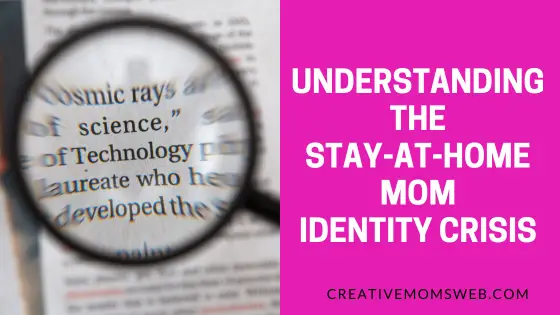An identity crisis experienced by a stay-at-home mom often revolves around the conflict between their role as a parent and their personal identity beyond caregiving. This type of identity crisis can arise due to the significant changes and challenges that come with transitioning from a career-focused or independent lifestyle to one centered around caring for children and managing household responsibilities.

Common factors contributing to Stay-at-Home Mom Identity Crisis
Some common factors contributing to an identity crisis among stay-at-home moms include:
- Loss of professional identity: Many stay-at-home moms may have left behind careers or educational pursuits to focus on raising children. This shift can lead to a loss of identity tied to their professional accomplishments and skills.
- Social isolation: Spending much of their time at home with young children can lead to feelings of isolation and a lack of adult interaction, which can further exacerbate feelings of identity loss.
- Lack of personal time: Balancing the demands of childcare, household chores, and possibly a partner’s career can leave little time for self-care or pursuing personal interests and hobbies.
- Financial dependence: Relinquishing a source of income to stay at home may lead to feelings of financial dependence and a loss of autonomy.
- Diminished social status: Societal attitudes toward stay-at-home moms can sometimes diminish their sense of worth or contribution outside of traditional career roles.
How to cope with Stay-at-Home Mom Identity Crisis
To cope with an identity crisis, stay-at-home moms can explore various strategies, including:
- Engaging in activities that promote personal growth and self-expression, such as hobbies, volunteer work, or pursuing educational opportunities.
- Building a support network of other parents or joining community groups to combat feelings of isolation.
- Communicating openly with their partner about their feelings and needs, including discussing potential adjustments to roles and responsibilities.
- Setting boundaries and carving out time for self-care and personal pursuits, even amidst the demands of caregiving,.
- Seeking professional support through therapy or counseling to navigate feelings of confusion and identity loss.
Read:
- Root causes of stay-at-home mom identity crisis
- Ways to rediscover identity as a stay-at-home mom
- Signs and symptoms of stay-at-home mom identity crisis
Ultimately, overcoming an identity crisis as a stay-at-home mom often involves finding a balance between the fulfilling role of caregiving and maintaining a sense of personal identity and fulfillment beyond parenthood.
